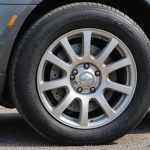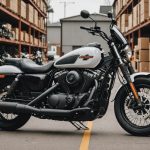Motorcycle riding is a thrilling experience, but the weather can significantly affect your safety and enjoyment on the road. Whether you are an experienced rider or just starting, understanding how different environmental conditions impact your ride is crucial. This article explores the effects of various weather conditions—such as cold, heat, rain, and wind—on motorcyclists and provides practical tips on how to prepare for each situation. By equipping yourselves with the right knowledge and gear, you can enhance your safety and comfort, making your time on the bike more enjoyable.
Riding in Cold Weather: Preparation and Safety Tips
Cold weather riding presents unique challenges for motorcycle riders. Low temperatures can lead to reduced grip on the road, increased fatigue, and even hypothermia if not properly prepared. As temperatures drop, your motorcycle’s performance may also fluctuate. Tire pressure decreases in cold weather, affecting traction. To combat these effects, it’s essential to wear appropriate gear. Layering your clothing helps maintain warmth, while windproof jackets can reduce the chill caused by air resistance.
Topic to read : What should you do if your motorcycle won’t start after winter storage?
Before heading out, check your bike’s systems. Ensure that your tires are adequately inflated, and consider using tires specifically designed for cold weather. Additionally, maintain your motorcycle’s battery, as cold temperatures can reduce battery performance. Remember to adjust your riding style. Allow for additional stopping distance, as traction can be diminished in cooler conditions. Riding smoothly and avoiding sudden maneuvers will not only help you maintain control but will also keep you safer. Be aware of the potential for icy patches on the road, especially in shaded areas or near water sources.
In summary, when riding in cold conditions, layering your clothing and using the right gear is essential. Always perform a pre-ride check, adjust your riding style, and remain cautious of icy roads. These steps will help you ride safely and comfortably, despite the cold.
Also to discover : How can you select the right tires for your motorcycle based on riding style?
Navigating Rainy Weather: Challenges and Solutions
Riding in the rain can be daunting, but with the right preparation, motorcyclists can navigate these conditions safely. Wet roads significantly increase the risk of accidents due to reduced traction. It becomes crucial to adjust your riding techniques; brake earlier and avoid abrupt turns to maintain stability.
Your gear plays a vital role in staying dry and safe. Waterproof jackets and pants are essential, as they help keep you dry and warm. Additionally, using gloves with a water-resistant feature will help maintain grip on the handlebars. Consider investing in rain gear that is breathable to prevent overheating.
Visibility is another concern during rainy rides. Make sure your motorcycle’s lights are functioning correctly, and consider using a helmet with a visor that is antifog and clear to enhance visibility. Avoid riding through large puddles; they can conceal hazards such as potholes. After a rain shower, be particularly cautious of oil slicks that can make the surfaces dangerously slippery, especially in the first few minutes of rain.
In conclusion, rainy weather demands increased caution and suitable gear. By adapting your riding style, wearing waterproof clothing, and maintaining your motorcycle, you can safely ride in the rain while minimizing the risks associated with wet conditions.
Riding in Heat: Staying Cool and Safe on Your Bike
High temperatures can create discomfort and increase the risk of heat-related illnesses for motorcyclists. When the weather turns hot, your body can quickly become fatigued, impairing your ability to focus on the road. It’s essential to stay hydrated, as dehydration can lead to serious health issues. Always carry ample water and take breaks to replenish fluids.
Your gear also plays a role in staying cool. Opt for lightweight, breathable clothing made from moisture-wicking materials. This can help maintain body temperature and allow sweat to evaporate, keeping you cooler. Additionally, consider wearing a ventilated helmet designed to promote airflow.
Be mindful of the motorcycle’s performance in heat. High temperatures can affect tire pressure and engine performance, so check your tires and fluid levels regularly. Avoid riding during the hottest part of the day when possible. Instead, opt for early morning or late afternoon rides when temperatures are more manageable.
To summarize, when riding in heat, focus on hydration, wear lightweight gear, and keep your motorcycle in optimal condition. By taking these precautions, you can enjoy your rides even in high temperatures while minimizing the risk of heat-related issues.
Windy Conditions: Tips for Staying Steady on Your Ride
Wind can be a significant factor when it comes to motorcycle riding. Strong gusts can push your bike off course, particularly in open areas or near large vehicles. Understanding how to manage your motorcycle in windy conditions is vital for safety.
When riding in wind, maintain a firm grip on the handlebars. Allow your body to counteract the wind’s force, leaning into the gusts as necessary. This technique helps you maintain control and stability. Adjust your speed; riding too fast may make it difficult to control your motorcycle, while too slow can increase your vulnerability to being pushed around by strong gusts.
Your gear can also help when facing windy conditions. A well-fitted jacket with a streamlined design can reduce wind resistance. Avoid loose items that can be blown around, as they may not only distract you but can also create additional drag.
It’s also wise to be cautious of larger vehicles when riding in strong winds. Trucks and buses can create turbulence that affects your stability. Give them plenty of space and avoid riding too closely.
In conclusion, managing riding in wind requires attentiveness and technique. Maintain a firm grip on your bike, adjust your speed accordingly, and wear gear designed to minimize wind resistance. By considering these factors, you can enjoy your ride even in breezy conditions.
In summary, the weather significantly impacts motorcycle riding, influencing safety, performance, and overall experience. Whether facing cold, rain, heat, or wind, each condition requires specific preparation and adaptation. By investing in high-quality gear, adjusting riding techniques, and maintaining your motorcycle, you can navigate all types of weather safely.
Stay informed about the conditions before your ride, and don’t hesitate to postpone if the weather seems unfavorable. Your safety should always be the top priority. With the right knowledge and preparation, you can enjoy your motorcycle adventures year-round, regardless of the weather.











